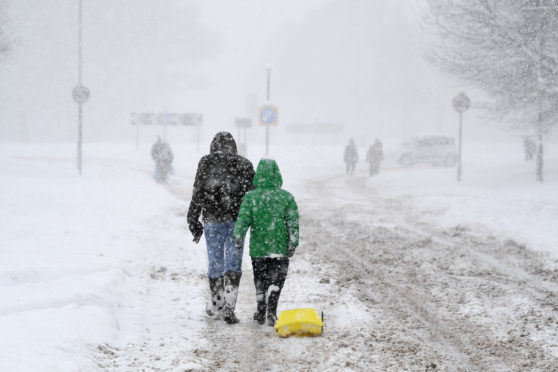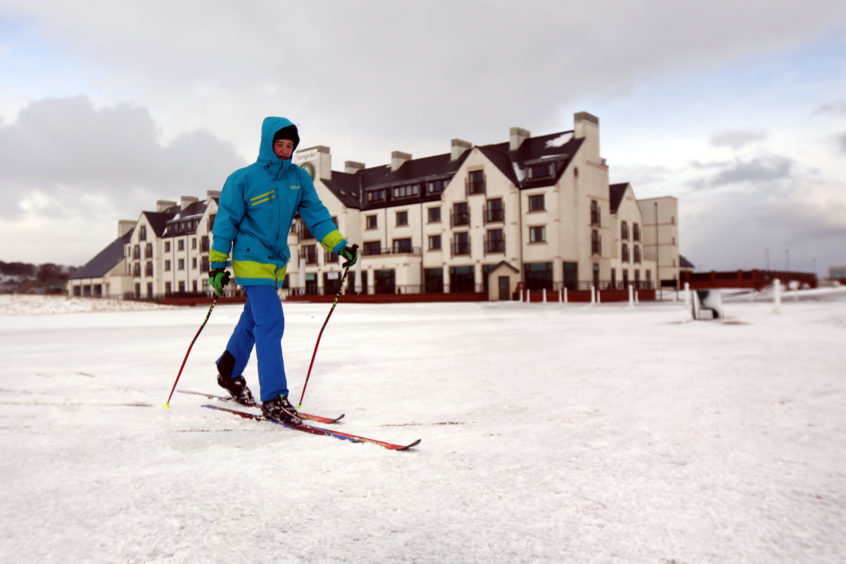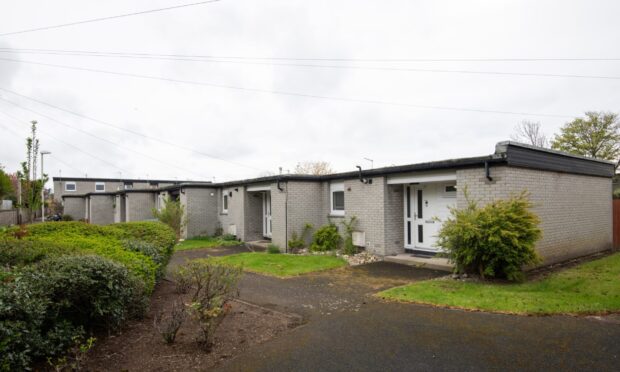The so-called Beast from the East has blasted a near £1 million hole in Angus Council’s fragile budget after battering the area in the worst winter for a decade and a half.
Having set aside £2.7m to keep the area’s roads and streets clear, council chiefs have now revealed the total 2017/18 bill is set to top more than £3.5m.
As the mercury plummeted to below zero for the highest number of days in a decade and a half, record levels of morning and evening treatments were required on priority routes and footpaths.
Roads bosses will now have to identify ways to make up the overspend. They are also in dialogue with neighbour authorities in Dundee and Perth and Kinross to look at ways of working together to cut winter bills in future.
The council’s head of infrastructure, Ian Cochrane will set out the 2017/18 activity in a report to communities committee councillors in Forfar on Tuesday.
His report reveals 19,000 tonnes of salt were spread by gritter crews across the county.
“The winter just experienced was one of the most severe in recent times where the carriageway saw temperatures dip to minus figures (centigrade) overnight on numerous occasions, requiring treatment with day temperatures later rising above zero,” he says.
“Many of our customers are unaware of our treatment activities during such events where freezing conditions require attention.
“During earlier parts of the season routes frequently required retreatment with rain washing off the salt after previous treatment.
“There was a period of extensive freezing prior to Christmas with hard frosts experienced which required repeated treatment. Also a prolonged period of snow was experienced in late February/early March known as the Beast from the East with snow continuing into early April extending the season,” adds Mr Cochrane.
Fresh snow fell on Angus routes on 26 days over the winter, against a 15-year average of 22 days and significantly ahead of the 2016/17 tally of just eight days.
Treatment to priority road routes was carried out on 103 mornings, compared to the 15-year average of 77, and 67 in 2016/17.
The priority footpaths tally gave an even more dramatic reflection of the severity of the past winter.
Against a 15-year average of 27 daily treatments, footpath gritters were out on 51 days – more than four times the figure of 12 days the previous winter.
Angus is planning to halve its footpath gritter fleet from 20 to 10 for the coming winter.
Mr Cochrane adds: “Routing will be worked on through the summer months with prioritisation focused in the seven burghs.
“In addition, together with colleagues from Dundee and Perth and Kinross, Angus has been looking at areas of winter maintenance that can be harmonised across Tayside with a view to further savings and efficiencies and these will be brought before committee in due course.”












